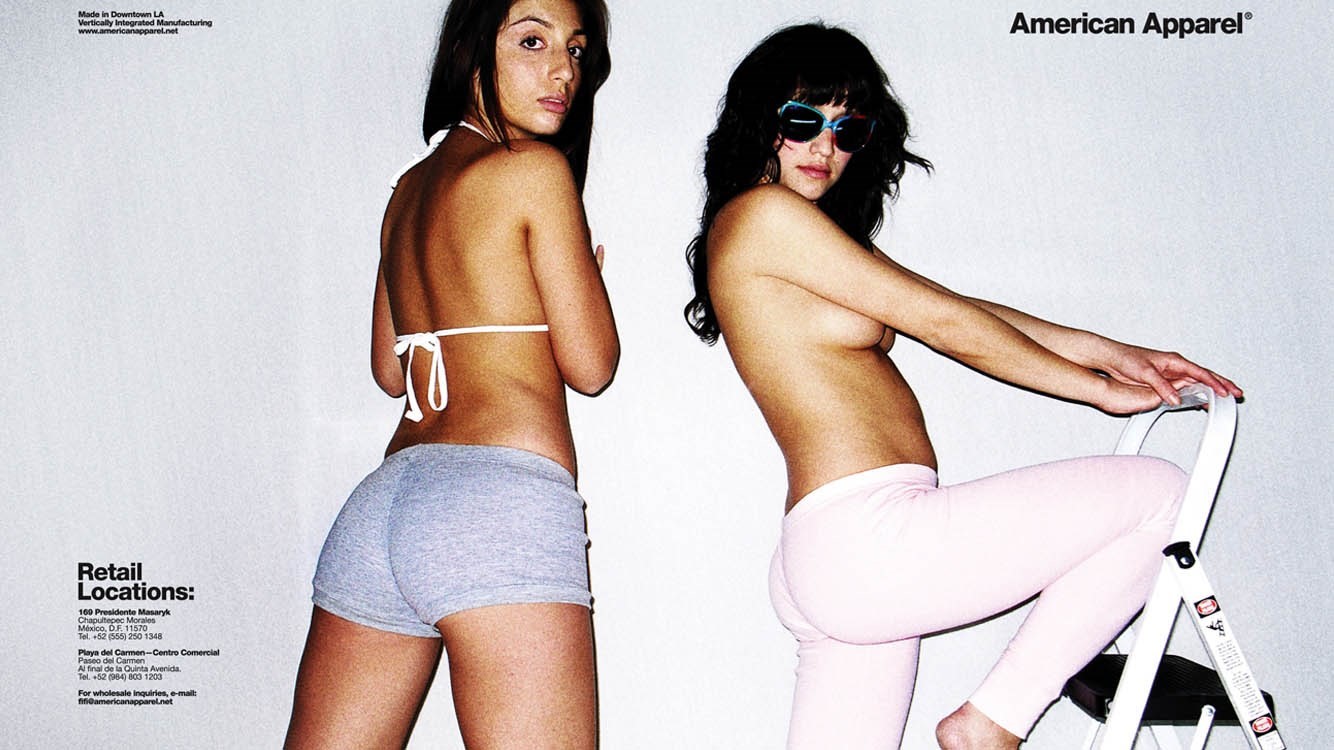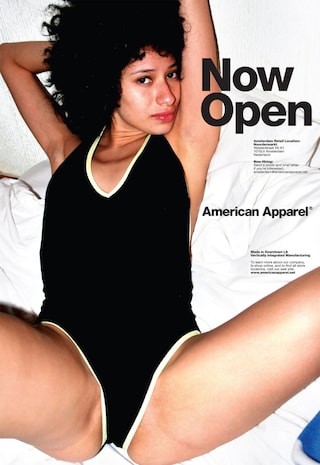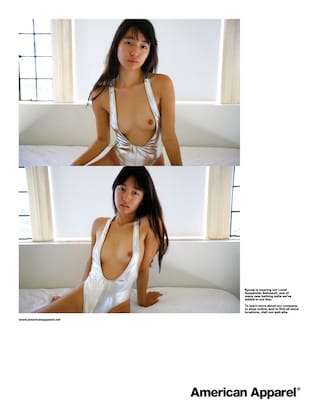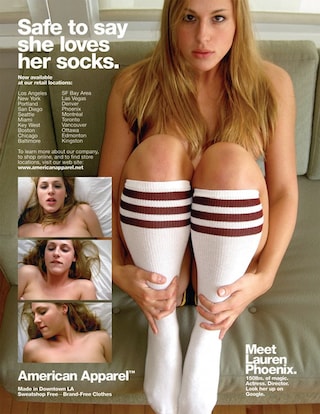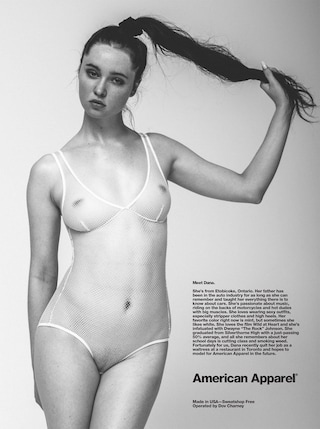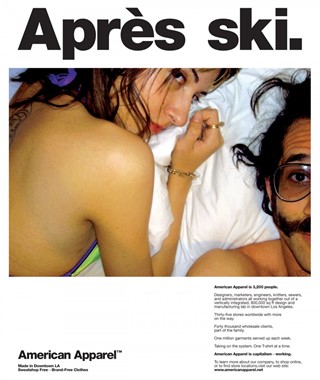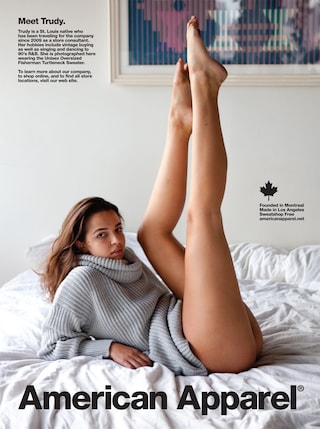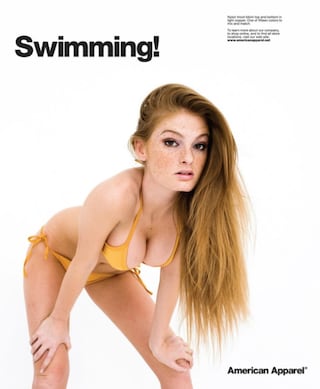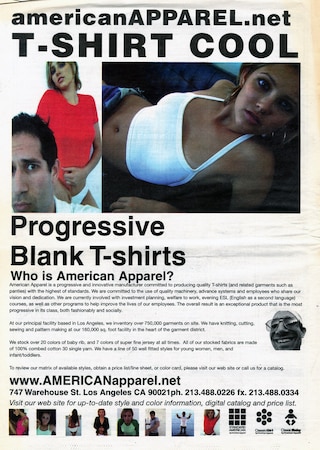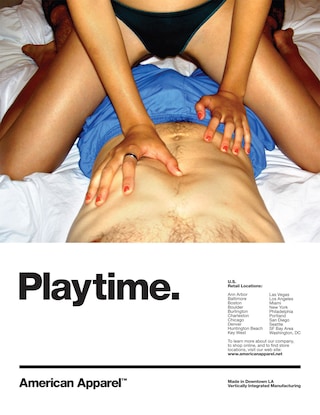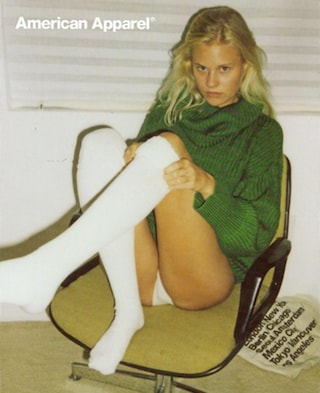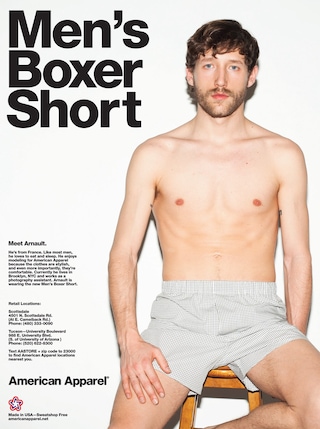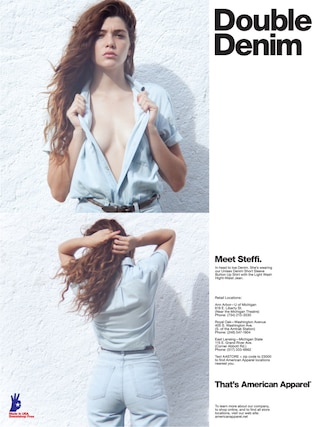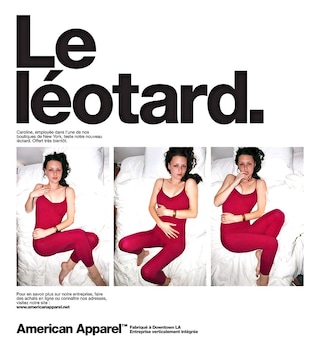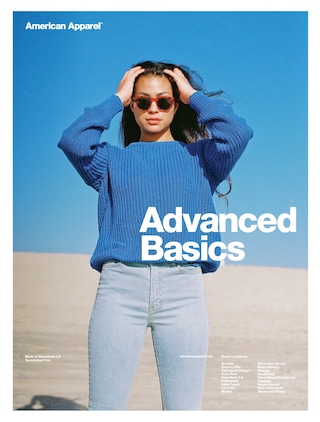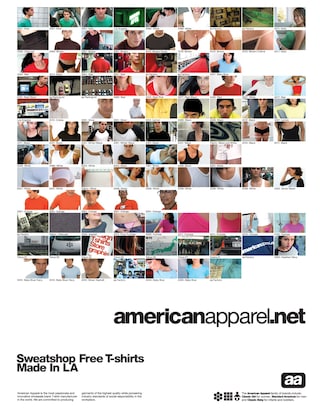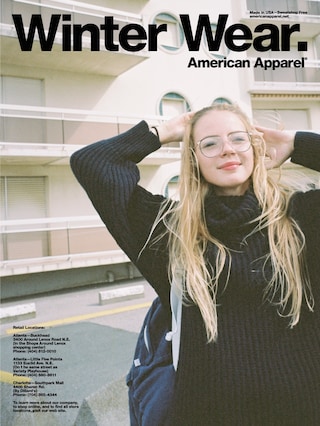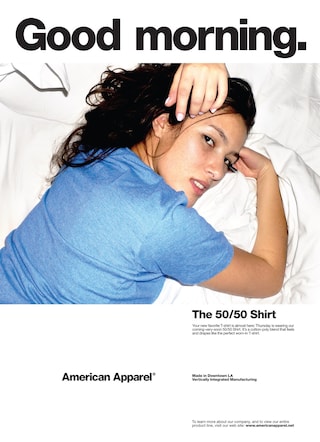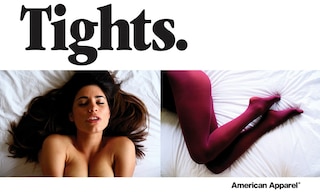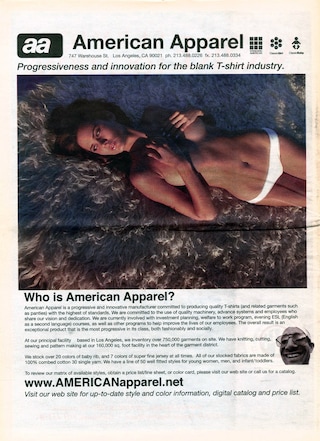The label’s progressive labour standards and high voltage ads made it notorious – from dorm room project to generation-defining brand, we trace its past and ask: what’s next?
American Apparel was not necessarily destined for greatness when its founder – then just a high-schooler – had an idea: he would sell t-shirts. With few funds and virtually no practical experience, he started a tiny business, importing classic American t-shirts to Montreal in an operation largely run from his Connecticut boarding school dorm room. Ten years later, that after-school project had earned the title of America’s largest t-shirt manufacturer and the reputation of being one of the most controversial brands in the world. How did that happen? To answer that, you have to familiarise yourself with Dov Charney, the brand’s founder and its biggest liability.
In the early 1990s American Apparel was just a small start-up established by the Canadian Charney, who had enrolled at Tufts University near Boston only to drop out before graduation to pursue the endeavour full-time with money borrowed from his parents. After ultimately settling in Los Angeles in 1997, Charney began to make waves, challenging the labour standards of the local garment industry by paying higher wages (two times higher than the standard wage at times) and providing benefits for his workers, and touting his company’s mission of removing exploitation from the garment manufacturing process.
After experiencing early success with American Apparel’s wholesale model, Charney decided to expand into direct consumer retail, and the company went into aggressive expansion mode. American Apparel opened its first store in the trendy Echo Park neighbourhood of Los Angeles in 2003. Two more stores – one in Montreal, the other in New York – followed that same year. Under the direction of Charney, it expanded to Europe in 2004, and in 2005, the brand opened 65 more stores. Today, they boast over 260 locations worldwide in 19 countries, including ones in Ireland, Belgium, France, Germany, Italy, Spain, Sweden, Switzerland, Israel, China, South Korea, Japan, Australia, Mexico and Brazil, among others. The press has since noted the “dangerous trap of (American Apparel’s) retail expansion,” or what others have called “rapid over-expansion.” In 2010, Charney said this was necessary to boost awareness of the brand. However, he also admitted: "Maybe there were a dozen stores we shouldn't have opened.”
Since its earliest days, American Apparel relied on bold advertising as a tool to raise its profile, and as a result, its ads have played a significant role in shaping its identity. Look back to 2000, for instance, when the company was still operating primarily as a wholesaler. It was making its name selling ethically-manufactured blank t-shirts, and “related garments, such as panties,” as it noted in an early marketing flyer, which included photos of scantily-clad girls – and Charney, himself, who would become a semi-regular fixture in imagery. That was just the beginning. In the years to come, we would see girls wearing nothing but tube socks, sheer bodysuits or underwear. Campaigns that featured girls wearing next-to-nothing were the new norm – for American Apparel, at least, and once merely suggestive ads eventually became much more blatant and attention grabbing. Instead of showing a scantily-clad girl, American Apparel managed to out do itself by posting online banner ads with fully topless models beginning in 2005.
“After settling in Los Angeles in 1997, Charney began to make waves, challenging the labour standards of the local garment industry by paying higher wages (two times higher than the standard wage at times)”
A number of other elements were consistently at play making American Apparel ad campaigns distinctly their own – besides that famous Helvetica logo. They all shared a candid, amateur vibe – evoking the snapshot aesthetic that Lisette Model pioneered and which Terry Richardson and Juergen Teller had a strong hand in bringing to the mainstream. A far cry from the polished, traditionally glamorous ads that big fashion houses were putting out at the time, there was no obviously ‘done’ hair and make-up, professional sets or recognisable faces. Instead, there were a lot of beds, couches, white walls, and provocatively-posed models that looked like the girl next door.
These were not women you would see walking during Paris Fashion Week. Bypassing the system of traditional agency-signed models, American Apparel openly opted for “real girls,” ones that Charney spotted on the street or that worked in the brand’s stores. According to the company’s website, “We find our models all over the world, through online submissions, word of mouth, and in retail stores, where we've been known to do an impromptu test shoot or two.” In one ad, Kelley, an American Apparel employee, is pictured posing for an array photos, in one she wears just a thong. According to the ad’s caption, the photos were taken “by a fellow employee at the company apartment in Mexico city…Kelley chose and re-enacted her favourite poses from vintage porn mags.” Another ad, entitled, “Pantytime,” features another American Apparel employee, who is posing topless in bed – wearing nothing but the brand’s underwear, of course.
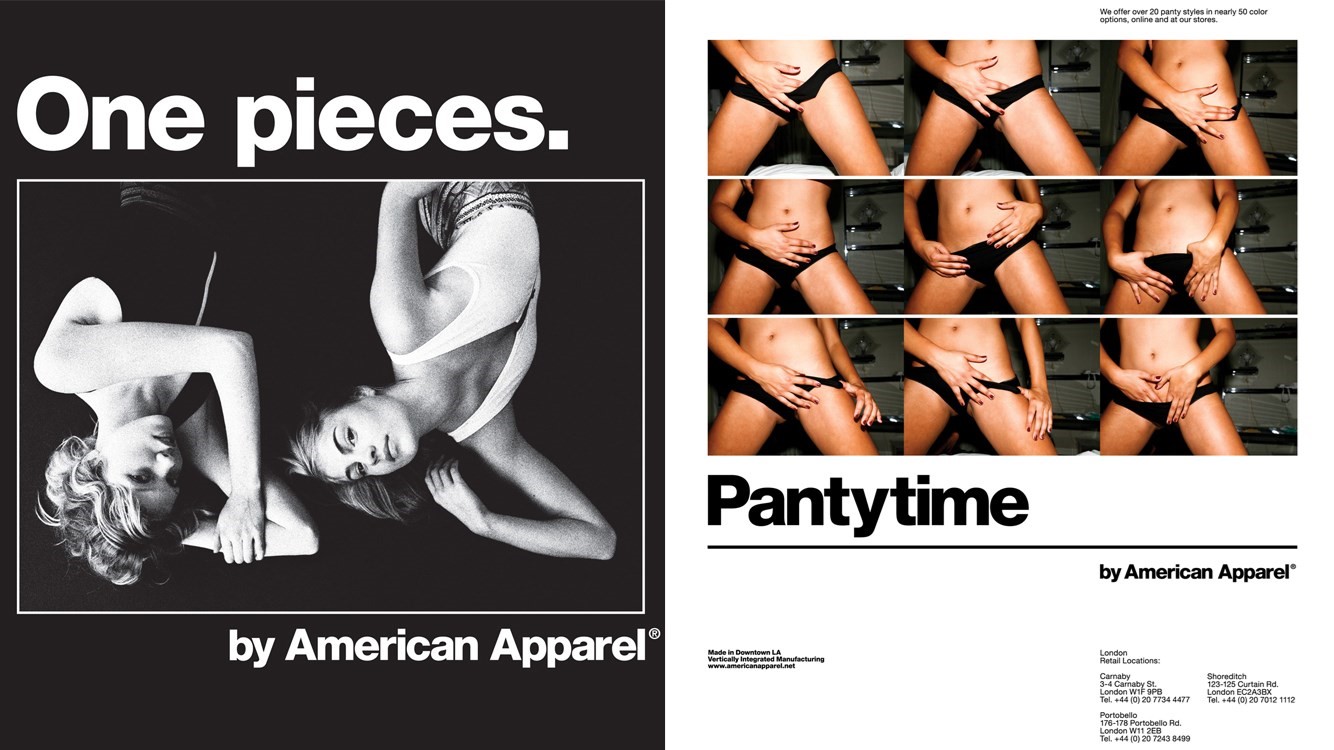
While street casting is not problematic on its face, and is, in fact, utilised by an array of high fashion brands after being pioneered largely by Raf Simons in Antwerp in the mid-1990s, American Apparel took it a step further, with Charney stepping up to photograph the models himself. As indicated by the British Advertising Standards Authority, an independent regulator of advertising which began to step in repeatedly, banning ads, the company’s candid camera style shots were judged to be “overly sexual,” “voyeuristic,” and “offensive and irresponsible.”
American Apparel was undeterred, though. Because the company liked to continually push the envelope, right around the time it started featuring completely topless girls in its ads, its “real girl” models took the form of porn stars, like Lauren Phoenix, Faye Reagan, and Sasha Grey. Of its more bold direction, the company's former director of marketing and online advertising strategist Ryan Holiday, said: "We photograph models in a way that's honest. We aren't so constrained by the rules."
With time, critics began to question just how “real” its "real people” actually were. Writing for Jezebel back in 2010, former model Jenna Sauers took a stand: “The story that American Apparel tells about its models – that they are...employees, friends of Dov Charney, ‘real people’ and never professional models – is one much cherished by the company. It's also a lie.” She claims, “American Apparel's gaggle of utterly conventionally beautiful and slender women are not ‘factory workers.’ They may be ‘friends of Dov,’ but many of them do not work for the company he founded. You will not bump into an American Apparel model working the register at the store nearest you.” Instead, Sauers writes that “many are really ‘professional models,’ and some are adult film stars and actresses.” In fact, she said that she was friends with a number of professionals “who've moonlighted for American Apparel for a quick buck.” Notable however was the fact that the brand resisted Photoshopping models, and represented a wider array of body shapes and races at a time before diversity was such a talking point in fashion.
“American Apparel had a very precise identity to uphold: attainable aspiration – those hot, ‘real’ twenty-somethings that appeared in their images could be you”
Aside from the media buzz that followed from such campaigns, there was something much more significant at play in the way that these ads spoke for the brand and the values it embodied. American Apparel had a very precise identity to uphold: attainable aspiration – those hot, “real” twenty-somethings that appeared in their images could be you. To maintain this image, potential employees were strongly advised to include photographs with their applications and Charney reportedly approved or vetoed each and every one. According to a 2010 report by Gawker, “CEO Dov Charney made store managers across the country take group photos of their employees so that he could personally judge people based on looks. He is tightening the AA 'aesthetic,' and anyone that he deems not good-looking enough to work there, is encouraged to be fired." Speaking of the brand, Holiday told Gawker: “Every new hire contributes to our brand perception and it's very important to the success of the company to take it seriously.”
The company’s advertising was so consistently on-brand for many years that somewhere along the line, “American Apparel became more well known for its racy ads and questionable campaign headlines than its ethical manufacturing processes and cotton denier tights,” as was noted earlier this year. However, it is after all its clothing – the unbranded and moderately priced t-shirts, sweatshirts, jeans, and undergarments, which hardly ever change – that are what helped it rise to success, as was its firm dedication to local and ethical manufacturing.
Still a “relatively new company in the U.S. clothing business,” as MarketWatch wrote in 2006, American Apparel had managed to take on larger competitors, such as The Gap, by catering to those experiencing logo fatigue. From early on, Charney eschewed logos – like the brand names his rivals were slapping on most of their t-shirts and sweatshirts. He instead created branding-free garments, mostly in bright, flashy colors. First, it was the “baby tee,” then came the V-neck t-shirts, and then the colorful zip-up hoodies with their contrasting white cords. These recognisable products would become iconic items in the American Apparel repertoire – so much so that they are still being sold in stores to date.
As the company grew and achieved an array of accolades, such as filling the slot of the largest t-shirt manufacturer in America or Charney being named an Ernst and Young Entrepreneur of the Year, it followed largely the same model in terms of the manufacturing and merchandising of goods. In fact, for many years, American Apparel offered only a couple of handfuls of different styles, choosing to innovate in terms of colour and fabric. And for the most part, it has not deviated from this strategy in any dramatic way.
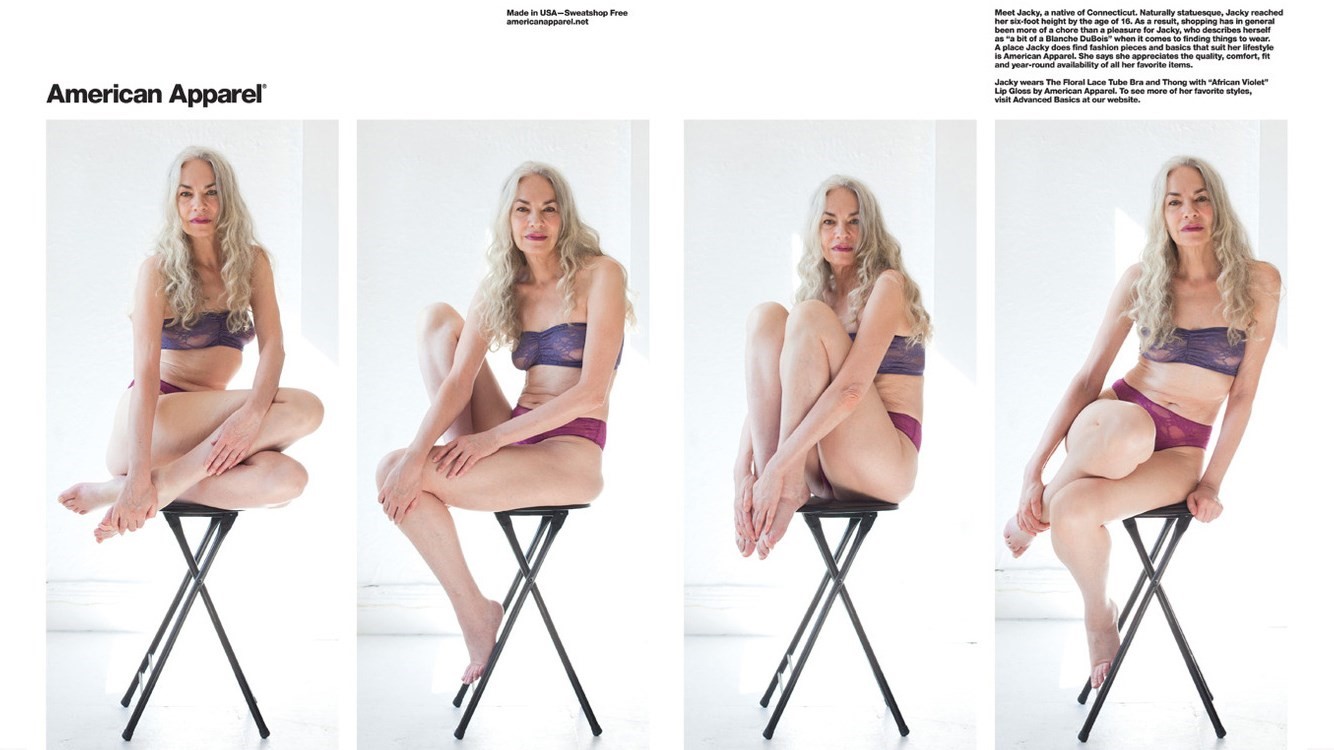
In addition to the appeal of its classic American Apparel styles that consumers could count on being in its stores season after season, the price was also a sweet spot for shoppers, and thus, for American Apparel. From the start, its garments were relatively affordable; their £25 t-shirts were pricey enough that not everyone shopped there (which added an aura of exclusivity), but not too expensive that they alienated potential consumers (which made it profitable).
Add to that the ethical overtones that spoke to American Apparel’s target demographic: the fashionable metropolitan types (read: hipsters). Its staunch dedication to both liberal social politics and manufacturing in downtown Los Angeles increasingly became a point of differentiation as most similarly situated retailers began to shift production overseas and some began to face sweatshop scandals. With production firmly grounded in the US, and with slogans on its website that read, “Our Garment Workers Are Paid Up To 50 Times More Than The Competition,” American Apparel provided a safe haven for consumers who wanted to look cool and feel good about themselves and their purchases. Its “commitment to sustainability,” as demonstrated by its various recycling programs, solar panels and efforts to reduce its carbon footprint, was outlined on its website and became another talking point for well-meaning consumers.
“They took on larger competitors, such as The Gap, by catering to those experiencing logo fatigue. From early on, Charney eschewed logos – like the brand names his rivals were slapping on most of their t-shirts and sweatshirts”
Despite such high points, American Apparel’s affordable fashion empire has seem some visible cracks emerge. The past year or so has seen the company in the news thanks to the very public firing of its founder and chief executive officer Dov Charney who had a handful of ugly sexual harassment lawsuits filed against him by former employees; a Chapter 11 bankruptcy filing; and its delisting from the New York Stock Exchange.
The reason that caused American Apparel to find itself in this less than favourable position is multifaceted. In short: it has considerable debt and far too little cash to keep up. As previously noted, its rapid retail expansion, which has been costly, is partially to blame. Its 227 stores, which employ something like 5,000 people, amounted to roughly 30% of the brand’s revenue. It will be in their interest to cut down, especially in terms of underperforming stores.
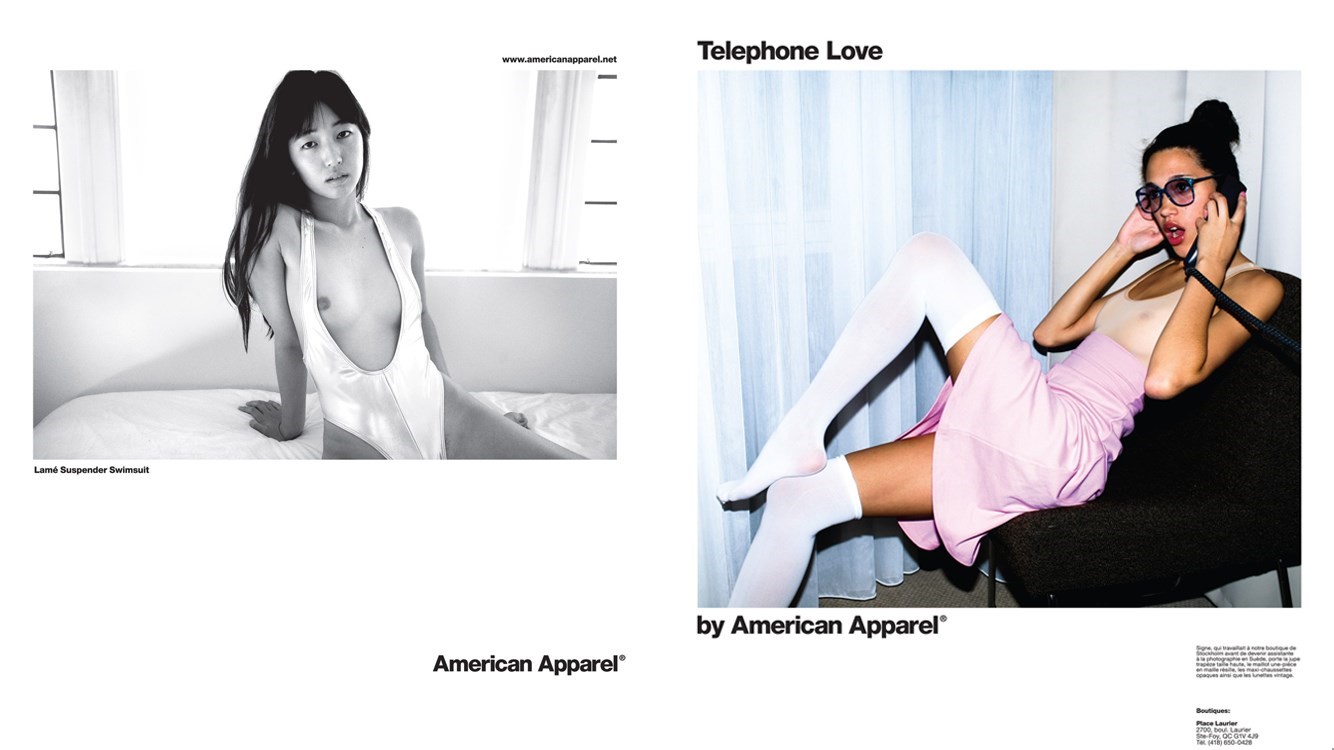
Another problem: in a world of fast fashion fuelled by cheap overseas labour, American Apparel hasn’t evolved. Sure, they have expanded their product offerings since the beginning, but not significantly enough to rival the high street giants like Zara and H&M, which truly dominate the affordable fashion market. Instead of following a Zara model, which has the most significant hold on the market and is based on the continuous introduction of relatively small batches of different, trend-driven styles on a bi-weekly basis, American Apparel tends to offer larger quantities of more classic garments on a more traditional schedule. The result is a smaller number of options for young shoppers, who long for the near-constant proliferation of trend-driven garments and accessories.
Under the direction of new CEO Paula Schneider, the brand is working to right some of these wrongs. For instance, it has toned down its ads. In April, it ran a “pro-women” ad on the back page of Vice magazine. The ad, which reads “Hello Ladies,” depicts various smiling employees who are fully dressed and identified by name and their start date at the company. It goes on to say: “Women have always been in charge at American Apparel. In fact, women make up 55 percent of our global workforce (sorry, guys) and an even higher percentage of our leadership and executive roles. This structure is incredibly (and unfortunately) rare in the corporate world.”
Speaking of the new advertising direction, Schneider said, “It doesn’t have to be overtly sexual. There’s a way to tell our story where it’s not offensive. It is an edgy brand. And it will continue to be an edgy brand.” And as indicated by Black Friday, when the brand’s employees were reportedly encouraged to wear t-shirts that read “Ask Me to Take It All Off,” the company is not shedding its controversial image entirely. Not yet, at least.
“It doesn’t have to be overtly sexual. There’s a way to tell our story where it’s not offensive. It is an edgy brand. And it will continue to be an edgy brand” – CEO Paula Schneider
American Apparel, sans Dov Charney, is not stopping there, though. According to Schneider, the brand will revamp itself and hopefully, its financials, by creating “new and relevant products, launch(ing) new design and merchandising initiatives, and growing (their) e-commerce business.” With the influx of fast fashion and the way it has affected consumers’ expectations in terms of price and timing, an increasing number of companies that have not evolved are finding themselves in strained financial positions. As such, it is essential that American Apparel develop new products and a modified delivery schedule in order to keep consumers shopping.
It is far too soon to tell whether such efforts will prove effective, but we do know this, the brand was not established in a way that screamed success. It got its start in a dorm room with a founder that lacked any significant business training or retail experience, and yet, borne from this humble founding was a progressive, provocative company that has been on our radar, collectively, for the past ten years – for one reason or another. If the brand can manage to return to its roots and focus on what it was originally known for – quality garments that are made ethically – while simultaneously staying abreast of the demands of the modern consumers, it very well may be able to regain some of the fans it has lost along the way. Because at the end of the day, who doesn’t love a well-made, all-American t-shirt.

